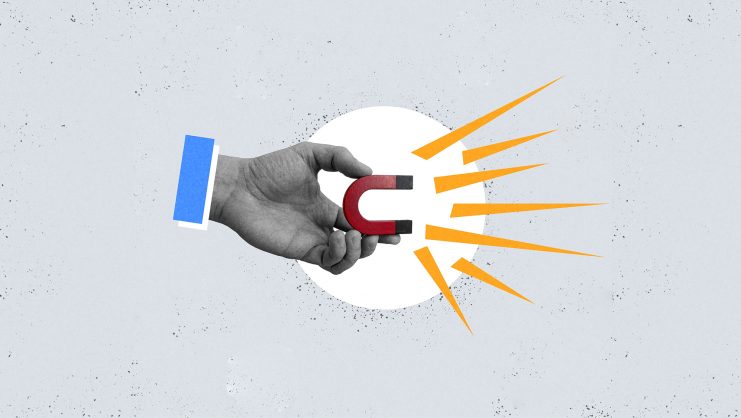Leadership is always a challenge, but the current turbulence brought about by globalization and dramatic changes in customers have multiplied the unknowns and options for companies. Faced with this uncertain scenario, they must transform their organizational culture. In this context, the new leader must use judgement to shake structures up. He or she must be a deft visionary able to glimpse the future regardless of what people are saying, an undisputed leader who exercises authority by example, a good communicator in all directions, and a tireless negotiator.
Changing the Model of Thinking
Businesses and how they are organized have been updated, but the question is whether customers, technology, and how everyone involved in an activity thinks have changed as well. Clearly, transformation includes changing people’s patterns of thought, not just the way things are done, and that requires a leader capable of changing not only how people work, but their model of thinking as well.
Sooner or later, leaders have to tackle both the strategic analysis of their company and the expectations people place on them as the guide for the future project. Leadership begins when we decide to face our own reality, regardless of what others might think or say or their expectations of us.
In addition to willingness, leaders must also have vision and be highly adept at perceiving the company’s future situation. Such visionary capacity is hardly extraordinary; the key factor is to believe in the potential of this quality or perception. Thus, not only do visionaries identify future opportunities and engage in powerful associative thinking, but, crucially, they are also chronically unsatisfied and encourage vision.
We reach the point of maturity needed to be leaders when we begin to make almost all our decisions irrespective of ego, because we are sure of what we are doing. Leaders display ambition, not greed, and they are not born, but made.
You cannot be a good manager or a good leader if you are not a good person. We thus have to encourage teamwork, learning to take on risks and responsibilities.
Assuming Responsibilities
Visionary leaders transform everything, and their ambition is oriented toward doing, not just deciding and thinking. The first step is to nourish talent. Next, they must set up a project whose fundamental elements are customers and people. Customers are both profit and potential. Anyone can succeed, as long as they devote themselves to what they excel at. That is what we must discover. Often people are shown the door at one company only to triumph at another, where they are given the opportunity to figure out what they are truly good at.
You cannot be a good manager or a good leader if you are not a good person. We thus have to encourage teamwork, learning to take on risks and responsibilities. We are unlikely to earn recognition if we do not assume responsibilities, which inevitably hide a more or less calculated, underlying risk. The goal is to get the team to gradually embrace this way of thinking and living.
Pessimism and defeatism are likewise unlikely to make you a leader. Leaders flow; they don’t get stuck. But many things in life have to be relativized. On his deathbed, Descartes said that he regretted only those times he had prepared and shielded himself against terrible misfortunes that had never come to pass.
Many companies have not yet learned that they survive by generating value; they do not realize that they depend on what customers are willing to pay for a product, regardless of its cost structure.
The Schizophrenic Consumer
One reality that has changed in recent years is the emergence of a new type of “schizophrenic” consumer, who has begun to dominate the market. These are people willing to drop any amount of cash on a Louis Vuitton shoulder bag, and then walk into a discount supermarket a few minutes later and refuse to pay a couple of cents for a plastic bag for their groceries.
At the same time, the vast majority of companies have not yet learned that they survive by generating value. They do not realize that they depend on customers’ perceptions, i.e., on what customers are willing to pay for an experience regardless of the product’s cost structure. That is why it is necessary to transform the entire company, not just the business area.
Crises have shown us that companies rarely die because of quantitative risks such as solvency, split payments, or debt; they disappear because they fail to cope with qualitative dangers, pure and simple. The first such danger is a lack of communication within the company, a sort of navel-gazing that causes problems in the value chain by assuming that the goal lies in the product and cost control. Another contingency to be avoided is for only senior management to understand the strategy to be followed, which leads to the implementation of multiple solutions for a single problem and, thus, skyrocketing costs and inefficiencies. Similarly, another common stumbling block is a failure to understand the business model and believing that growing revenue is the only thing that matters, without taking current customers, customer acquisition and retention, or service quality into account. Equally frequent is not knowing how to sell and using fear and pressure to place a product. Then there is the final qualitative risk of total failure of the monitoring and control systems.
Under the guidance of visionary entrepreneurs, transformation has enabled activities and businesses first developed many years ago to continue to thrive. One example is the circus, which first emerged in Ancient Egypt, featuring people with unique skills, often taking risks without any form of safety net, along with other “ingredients,” such as animals and clowns. Recently, a new model of circus has come out of Canada, which based its transformation on features such as: having a brand image; targeting a segmented market consisting only of middle- and high-income families; differentiating each product under the same brand and a different strategic business unit; daily consolidation of the audited accounts at the Canadian headquarters; inclusion of all employees as shareholders; advance sale of 35% of tickets through sponsorship; 25% of revenue from merchandising; not using animals; and having all employees perform at least four functions. It is a new model based on the business of emotion that also enables the incorporation of new technologies.
© IE Insights.











